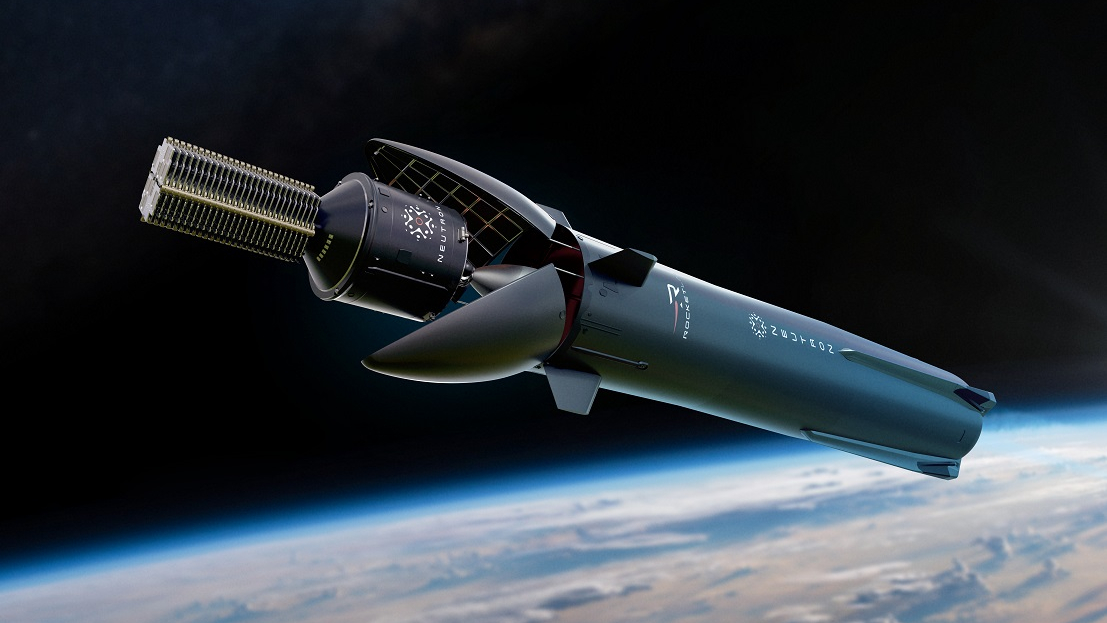Rocket Lab signs 1st customer for its powerful new Neutron rocket. But who is it?
The undisclosed client has booked two Neutron missions for 2026, with a potential for further future launches.

Rocket Lab is targeting mid-2025 for the debut of its partially reusable Neutron rocket, with commercial launches to start in 2026.
The company anticipates building from one Neutron flight in 2025 to three in 2026 and then five in 2027, Rocket Lab founder and CEO Peter Beck said during a Nov. 12 earnings call about the company's third-quarter financial results. The company then plans to scale up to seven launches and beyond in subsequent years.
Rocket Lab — which has been launching small satellites with its 59-foot-tall (18 meters) Electron rocket since 2018 — has made significant progress recently on Neutron hardware and securing customers, according to Beck. "We're well past the design phase now and deep into the qualification testing of our large-scale flight hardware," he said.
Progress has been made on the "Hungry Hippo" nose cone, which has entered mechanical testing, while the rocket's second stage has undergone a successful fueling test, known as a wet dress rehearsal. And Neutron's new Archimedes engine has achieved milestones, including over 100% throttle level tests, with production ramping up at the company's California assembly line.
Related: Rocket Lab will build Neutron, a next-generation reusable booster, in Virginia
There is also movement on the rocket's launch pad, with Launch Complex 3 at Wallops Island in Virginia nearing completion with key installations, including propellant tanks and a 165-ton steel launch mount.
The 141-foot-tall (43 m) Neutron is designed to launch up to 28,660 pounds (13,000 kilograms) to low Earth orbit. The rocket's reusable first stage is powered by nine Archimedes engines, which run on liquid methane and liquid oxygen in an oxidizer-rich closed cycle.
Get the Space.com Newsletter
Breaking space news, the latest updates on rocket launches, skywatching events and more!
Beck stated that, during 2024's third quarter, the company had made "key achievements, including the signing of a multi-launch deal for Neutron with a commercial constellation operator." The undisclosed client has booked two missions for 2026, with a potential for further future launches.
Neutron's first test flight in 2025 will not generate revenue, but the company is exploring opportunities to offset costs through partnerships.
Rocket Lab is targeting the medium-lift market with Neutron, and aims to ease a bottleneck in launch capacity, which Beck says amounts to a U.S. national security risk.
Neutron is key to Rocket Lab's plans not only to launch satellites for clients, but to also allow the company to deploy its own constellations in the future. But what such projects will look like remain under wraps. "We're not ready to reveal details on what this constellation or application may be, but I think it's important to understand the strong foundation we've built up across launch and space systems to enable it in due course," Beck said.
To reach the point of constructing constellations with Neutron, Beck said that reaching "high cadence, low-cost launch" is necessary, and this can only be made possible via reusability.
For now, Rocket Lab is focusing on carefully selecting customers for early Neutron launch slots, and working on scaling production and operations without overpromising and underdelivering.
Overall, Beck said that Neutron is in a good place. "A little over three years ago, we said it was going to take roughly three, four years, and cost $250-300 million," Beck said, adding that some other medium-lift and larger launch vehicles have cost in the many billions of dollars to get to first launch.
"So, we feel like we're on track, and we're going to kind of set a new benchmark for capital efficiency and timing of getting a new launch vehicle to the pad," Beck said.
Join our Space Forums to keep talking space on the latest missions, night sky and more! And if you have a news tip, correction or comment, let us know at: community@space.com.

Andrew is a freelance space journalist with a focus on reporting on China's rapidly growing space sector. He began writing for Space.com in 2019 and writes for SpaceNews, IEEE Spectrum, National Geographic, Sky & Telescope, New Scientist and others. Andrew first caught the space bug when, as a youngster, he saw Voyager images of other worlds in our solar system for the first time. Away from space, Andrew enjoys trail running in the forests of Finland. You can follow him on Twitter @AJ_FI.









